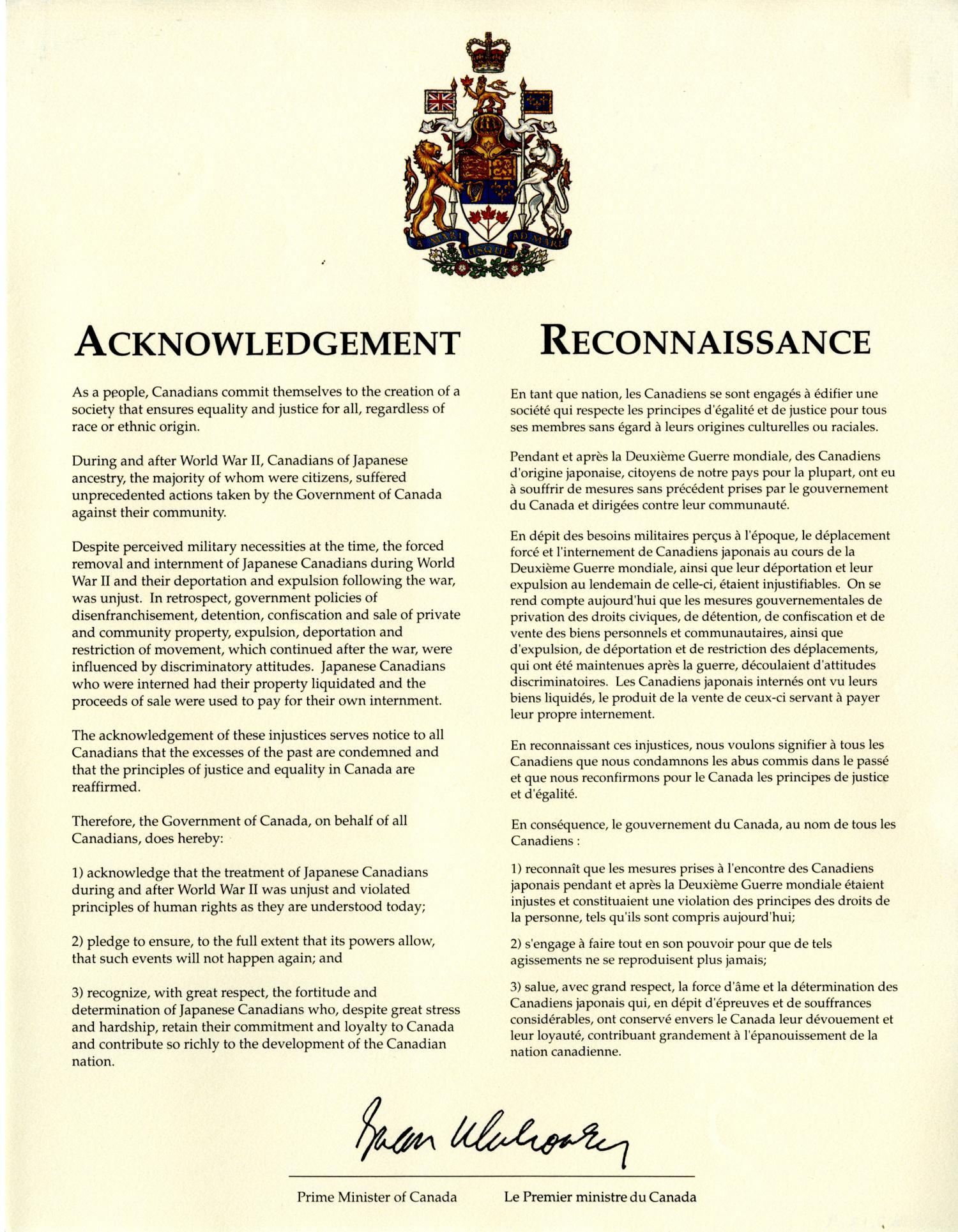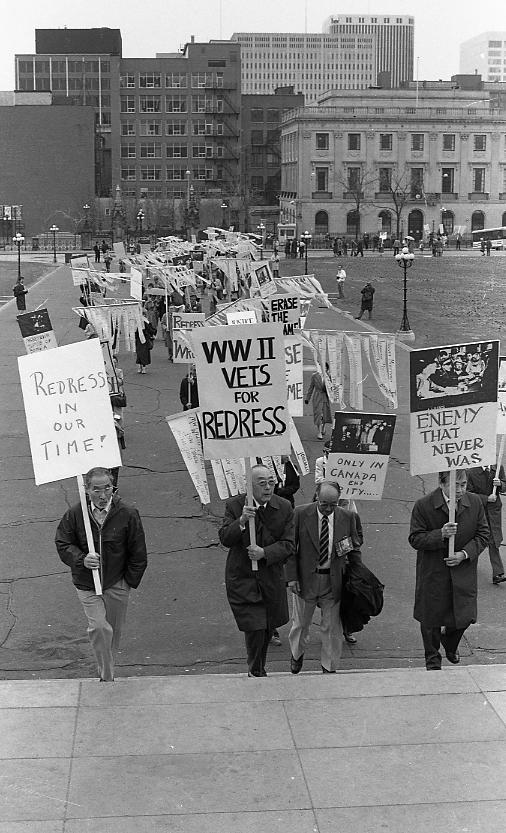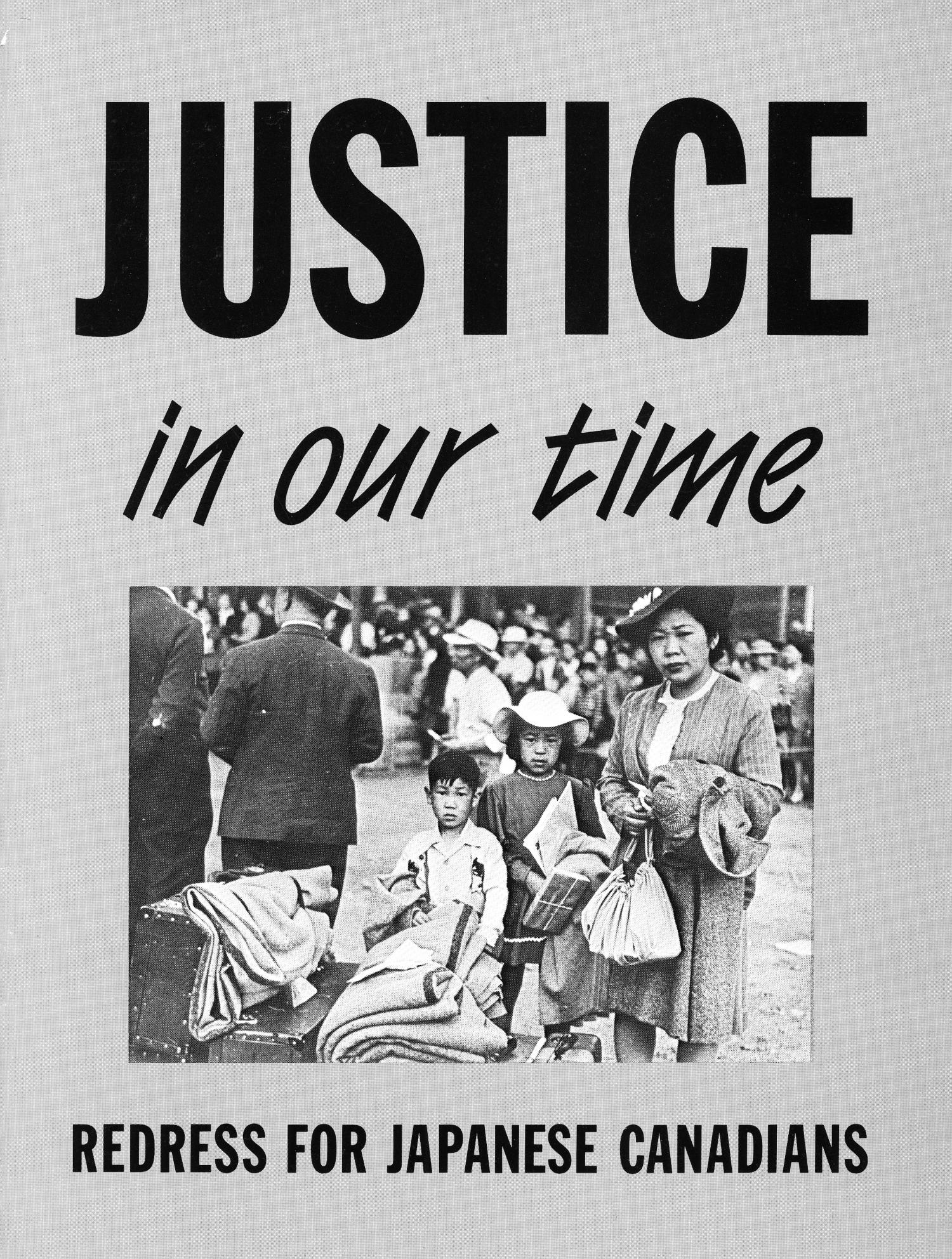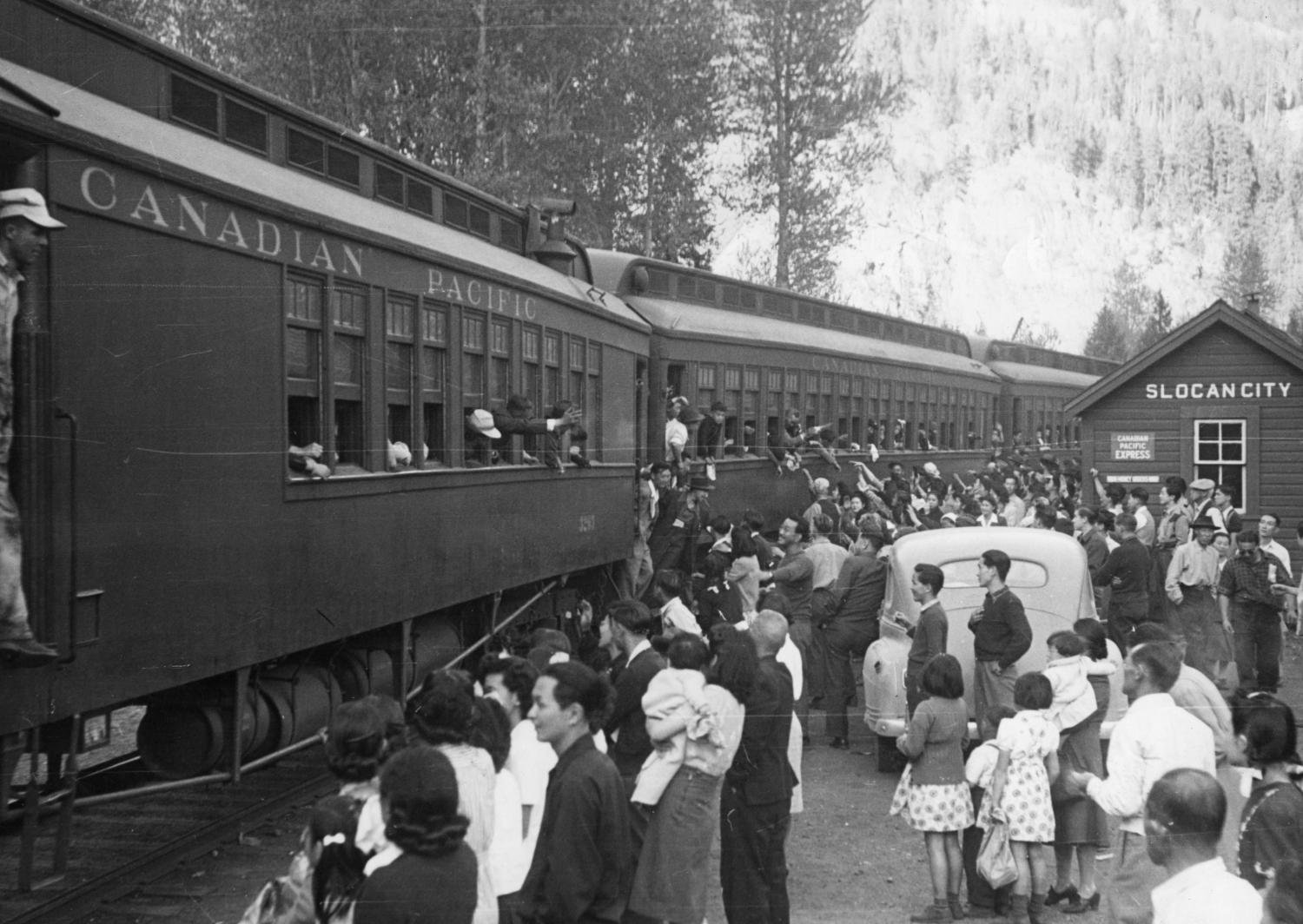Nikkei Fight for Redress
Japanese Canadians hold the government to account for WWII internment camps
Date: 1984
At the height of the Second World War, Canada forced some 22,000 Japanese Canadians from their homes. The federal government seized their property — their fishing boats, their farms, their homes. It sent most of those affected, three-quarters of whom were Canadian citizens, to makeshift internment camps in old mining towns or labour camps throughout British Columbia and other parts of the country. It pushed thousands, including some born in Canada, to repatriate to Japan. Finally, on April 1, 1949, four years after the war ended, the government told Japanese Canadians, previously whisked away from the West Coast, they could officially return home.
But things were not so simple. Those seven years of internment left Japanese Canadians grappling with new questions. How could they reclaim a home that so recently, and so vehemently, rejected them? And, ultimately, what was owed to them? Can stolen years be repaid? These issues and their complex implications hung over the province for decades, unanswered.
Conversations between former residents of the camps were taking place, though, usually in the privacy of living rooms. They told stories, exchanged experiences, bonded over shared trauma. A new grassroots movement pushing for redress would take shape in these living rooms, one that would eventually turn public in the early 1980s. It was spearheaded by community activists and an organization that was founded in the final years of internment, the National Association of Japanese Canadians (NAJC).
In November 1984, the NAJC submitted a brief to the Canadian government. In it, they wrote that the “legalized repression” of the War Measures Act went against the “sacrosanct, non-negotiable” promises of the Charter of Rights and Freedoms. They also highlighted the immense economic loss perpetrated by the camps: an estimated $443 million in 1986 dollars. They pushed for individual compensation, as well.
The NAJC had devoted energy to coalition-building with those outside of the community, networking with Indigenous, ethnic, religious and human rights groups. Thanks to their work, and the efforts of other activists, redress had gained popularity by 1986, with more than 60 per cent support across Canada. Of those in favour, 71 per cent supported individual compensation.
The campaign came to a head in 1988. On April 14, five hundred Japanese Canadians and their supporters marched on Parliament Hill. Less than five months later, on Sept. 22, Prime Minister Brian Mulroney would stand in the House of Commons and formally acknowledge Canada’s human rights violations committed during the Second World War. In addition, the government offered $21,000 to each person directly affected by the camps. It would also issue pardons for those who had been wrongfully imprisoned, and Canadian citizenship was restored to those who were stripped of it. Significantly, the War Measures Act, which the NAJC had denounced as “arbitrary legislation," was repealed.
While their campaign was intended to address the wrongdoings of the past, the Nikkei also had their eyes on the future. From funds given by the government, they established the Canadian Race Relations Foundation to fight all forms of racial discrimination in Canada.
It was, as one of the NAJC’s key negotiators Roy Miki put it, “an unusual achievement by a small group of citizens.” Their willingness to speak out against past injustices has also provided a foundation for other marginalized groups — from the Chinese Canadian community to Indigenous people, Ukrainian Canadians interned during the First World War to Canada’s LGBTQ community — to push for their own redress and reconciliation.
In May 2021, the province announced a $2-million fund for the care of Japanese Canadians who survived the camps. "The terrible loss suffered by thousands of Japanese Canadians in the 1940s is still impacting the community today, with many experiencing lasting health issues and trauma," said Health Minister Adrian Dix in a statement.
Sources:
- Bains, Camille. "Japanese Canadians Call on B.C. to Go beyond Mere Apology for Historic Racism." Toronto Star, 21 July 2019, https://www.thestar.com/vancouver/2019/07/21/japanese-canadians-call-on-bc-to-go-beyond-mere-apology-for-historic-racism.html.
- Canadian Press. “B.C. Gives $2M to Japanese Canadian Seniors as Step toward Righting Internment Wrongs .” CBC, 5 May 2021, https://www.cbc.ca/news/canada/british-columbia/japanese-canadian-internment-1.6015345.
- Government of Canada. "Japanese Canadians: Redress Campaign ." Library and Archives Canada, 9 Sept. 2020, https://www.bac-lac.gc.ca/eng/discover/immigration/history-ethnic-cultural/Pages/Japanese-redress-campaign.aspx.
- McRae, Matthew. "Japanese Canadian Internment and the Struggle for Redress." Canadian Museum for Human Rights, https://humanrights.ca/story/japanese-canadian-internment-and-the-struggle-for-redress. Accessed 7 May 2021.
- Nishiguchi, R. L. Gabrielle. The Canadian Japanese, Redress, and the Power of Archives. https://www.bundesarchiv.de/DE/Content/Publikationen/Aufsaetze/kriegsfolgenarchivgut-nishiguchi.pdf?__blob=publicationFile. Kriegsfolgenarchivgut: Entschädigung, Lasten- ausgleich und Wiedergutmachung in Archivierung und Forschung.
- Recommendations for Redressing Historical Wrongs Against Japanese Canadians in BC. National Association of Japanese Canadians, Oct. 2019, http://najc.ca/wp/wp-content/uploads/2019/11/NAJC_BC_Redress_report_only20191031.1421.pdf.





